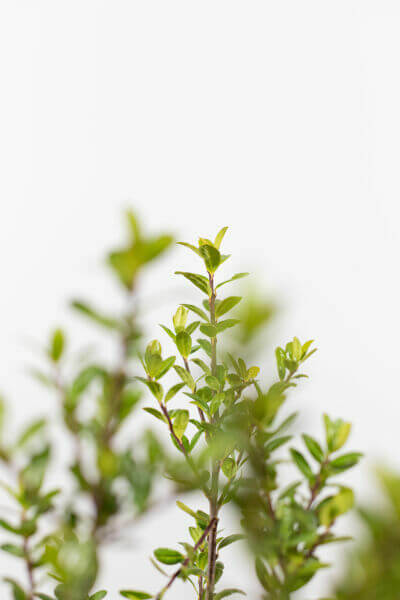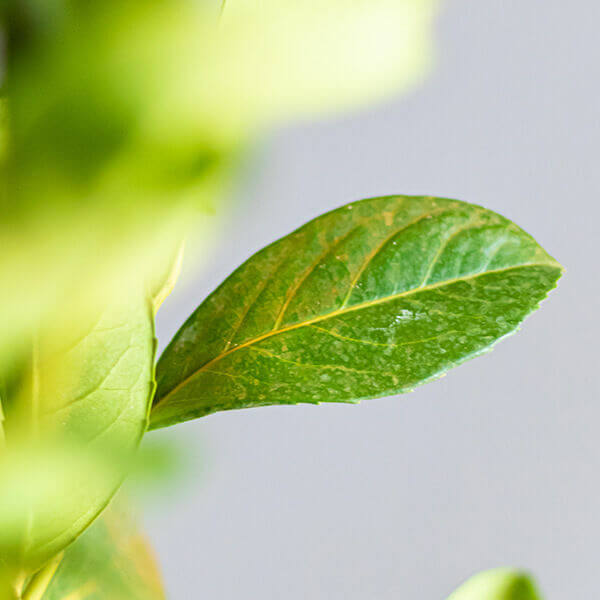Hedge Plants For Protecting Gardens
Hedge Plants For Protecting Gardens
Blog Article
Best Hedge Plants For Informal Hedges
Improve your garden's appeal with lush hedge varieties such as Yew (Taxus), Thuja, Laurel, Photinia, and Bamboo, celebrated for their structural stability and environmental advantages.
Yew and Thuja supply evergreen coverage and winter season resilience, while Laurel provides quick growth and broad, aromatic leaves.
Photinia includes seasonal charm with its lively red foliage, and Bamboo provides a low-maintenance, peaceful ambiance.
These hedges improve air quality, lower noise, and produce tranquil, personal spaces.
Appropriate planting, spacing, and upkeep make sure vigorous growth and eco-friendly consistency.
Explore how these lush varieties can elevate your garden's charm and wellness.
Secret Takeaways
Transform Your Garden With Lush Hedge Varieties
- Select Yew for its dense, evergreen growth and exceptional durability.
- Opt for Laurel for its fast growth and broad leaves, guaranteeing fast personal privacy.
- Choose Photinia for its lively seasonal foliage, which turns a striking dark red.
- Make use of Bamboo for a low-maintenance, winter-hardy hedge with visual appeal.
- Space plants 2-3 per meter and prune routinely for ideal development and health.
Popular Hedge Plants
When changing a garden with lavish hedge ranges, it's necessary to think about popular hedge plants such as Yew, Thuja, Laurel, and Photinia due to their distinct attributes and advantages.
Yew (Taxus) is highly esteemed for its longevity and dense, green growth, making it a prime choice for enduring landscapes.
Thuja is noted for its evergreen foliage and robust winter durability.
Photinia adds seasonal vibrancy with red leaves that darken in time, creating dynamic visual appeal.
Laurel offers quick growth and aromatic, broad leaves, perfect for fast personal privacy.
Furthermore, Bamboo is an outstanding choice for ambiance, offering a low-maintenance, winter-hardy alternative that boosts the garden's visual with its stylish, swaying canes.
These selections deal with a range of horticultural requirements and preferences.
Benefits of Garden Hedges
Garden hedges use a multitude of advantages, making them a valuable addition to any landscape. These natural barriers are affordable to implement and supply considerable wind protection, boosting air flow and contributing to sound decrease. The dense foliage of hedges like Thuja and Beech makes sure privacy by blocking exposure, creating a remote and peaceful environment.
Hedges also play a vital role in microclimate guideline, offering a steady environment that promotes plant development and reduces temperature changes. Their intricate leaf structures filter contaminants, improving air quality and adding to a healthier garden community.
Moreover, hedges stand out in sound reduction, absorbing and deflecting acoustic waves to lower ambient sound levels. This dual functionality of offering both visual and acoustic privacy boosts the overall serenity and visual appeal of any garden.
Planting and Maintenance Tips
For an effective hedge, careful preparation of the planting area is important. Make sure the soil has proper pH and drainage to support strong root advancement.
Area the plants properly for the chosen species. Water the hedge often throughout its initial growth stage, changing as required with seasonal changes.
Execute a organized bug control and disease prevention technique, utilizing chemical or organic treatments when required. Routinely examine for aphids, termites, and fungal infections.
Apply mulch to maintain wetness and suppress weeds. Seasonal pruning promotes dense growth and air circulation, important for plant health.
Following these standards will assist you cultivate a lively, properly maintained hedge that boosts the appeal of your garden.
Spacing and Cutting Guidelines
Spacing and Trimming Guidelines
Proper spacing and cutting are vital for cultivating healthy, visually appealing hedges. Sufficient spacing makes sure each plant gets enough nutrients, light, and air flow.
Follow these standards for optimum hedge upkeep:
- Spacing: Position hedge plants 2-3 plants per meter to motivate robust development.
- Pruning Methods: Regular pruning is important for preserving desired hedge height and shape. Trim brand-new growth in summer and cut back older wood throughout winter season.
- Seasonal Care: Change trimming schedules and techniques according to seasonal requirements to ensure plant health.
- Hedge Height: Routinely display and cut to preserve the wanted hedge height and attain uniform aesthetics.
Following these actions will ensure your hedge flourishes, enhancing both the appeal and performance of your garden.
Selecting the Right Hedge
Choosing the Right Hedge
Picking the suitable hedge involves examining elements such as mature height, foliage density, and environmental strength. Successful hedge plant selection requires understanding each species' development qualities and site-specific adaptability.
For instance, Yew (Taxus) offers exceptional longevity and thick growth, while Thuja is notable for its winter season resilience. Furthermore, considering upkeep requirements is crucial; fast-growing types like Laurel or Privet demand routine cutting, whereas low-maintenance options like Bamboo or Ivy might be preferable for those seeking very little upkeep.
Ecological factors such as soil type, light accessibility, and wetness conditions must also assist the choice procedure. This careful method makes sure the chosen hedges will prosper, supplying both practical and visual benefits to the garden landscape.
Shipment and Planting Advice
To ensure your hedge plants prosper, they need to be delivered by specialized carriers and planted without delay upon arrival.
Follow these essential steps for effective planting:
- Soil Preparation: Improve the soil with organic matter to improve drainage and nutrient material.
- Planting Depth: Develop a trench two times the width and equal to the depth of the root ball.
- Watering Techniques: Water thoroughly after planting, keeping the soil regularly wet however not filled.
- Mulching: Use a layer of mulch to retain moisture and suppress weeds.
Client Support and Service
Provided the important function of timely assistance in horticultural pursuits, our customer support group is readily available six days a week through telephone, e-mail, and social networks to use expert guidance and quickly address any concerns. Their commitment to fast reaction times makes sure client fulfillment by solving questions connected to plant health, optimum planting approaches, and upkeep schedules.

Availability
-------------------
Within 24 hours
This thorough support group, strengthened by an excellent 9.3/ 10 customer rating, highlights our commitment to enhancing the gardening experience for each customer.
Regularly Asked Concerns
The Length Of Time Does It Consider Hedge Plants to Develop?
Hedge plants usually need one to 3 years to end up being totally developed, with the specific period differing by species and growing conditions.
Efficient care during this vital period is important for robust growth. Consistent watering, vigilant weed control, and proper fertilizer application are essential in promoting strong root advancement.
For instance, fast-growing species like Laurel may establish faster, while slower-growing ranges such as Yew may take longer. Persistent maintenance accelerates the facility procedure, leading to dense and healthy hedges.
What Are the Finest Hedge Plants for Personal Privacy?
The question of the best hedge plants for privacy includes assessing evergreen and deciduous choices.
Evergreen hedges like Thuja, Laurel, and Cypress provide year-round protection, guaranteeing continuous personal privacy.
On the other hand, deciduous hedges such as Beech provide seasonal privacy, shedding leaves in cooler months.
Key maintenance pointers for privacy hedges include routine trimming, fertilizing in spring, and proper spacing-- usually 2 to 3 plants per meter.
Furthermore, constant watering and persistent weed removal are vital for promoting healthy, dense development.
Can Hedge Plants Draw In Wildlife to My Garden?
Yes, hedge plants can attract wildlife to your garden by offering essential advantages like shelter, food, and nesting sites, therefore improving regional biodiversity. Yew, holly, and laurel are excellent for drawing in birds, while ivy supports a range of insects.
Nevertheless, it is necessary to keep in mind that there are some drawbacks, such as increased maintenance to handle pests and routine maintenance. Carefully picking and maintaining hedge varieties can assist stabilize these benefits and downsides, eventually fostering a dynamic and sustainable community in your garden.
Exist Any Blooming Hedge Plants Available?
Yes, there are flowering hedge plants available that can improve the appeal of your garden.
For example, Elaeagnus, also called Olive Willow, produces aromatic white flowers in the fall, adding a touch of elegance.
Photinia, another popular choice, showcases lively red leaves that develop into an abundant green, developing a dynamic visual effect throughout the seasons.
To guarantee these plants grow, it's important to practice proper pruning methods and seasonal upkeep, such as cutting brand-new development in the summer and cutting back in the winter.
These measures will help preserve the health and aesthetic appeal of your blooming hedges.
How Do I Avoid Insects in My Hedge Plants?
To avoid insects in hedge plants, use natural bug control approaches and keep correct hedge care. Present helpful pests like ladybugs, which victimize damaging bugs, to develop a well balanced environment.
Regularly inspect your hedges for signs of infestation and promptly remove any afflicted parts to avoid the spread. Guarantee the health of your hedges by applying balanced fertilizers and providing adequate water.
Make use of mulching to maintain soil wetness and correct spacing to minimize plant tension and promote robust growth. These practices collectively assist in decreasing insect problems and maintaining a healthy hedge.
Conclusion
In essence, picking the ideal hedge get more info varieties such as Yew, Thuja, and Laurel can transform any garden into a serene sanctuary. These plants offer year-round greenery, boost aesthetic appeal, and offer useful benefits like noise decrease and wind security.
Proper planting strategies, precise spacing, consistent watering, and seasonal cutting are important for optimal development.
Reputable delivery services and skilled client support guarantee a seamless experience from purchase to planting, making it easier than ever to elevate your outside area.
Garden hedges offer a plethora of benefits, making them an important addition to any landscape. These natural barriers are economical to implement and supply significant wind defense, enhancing air blood circulation and contributing to noise decrease. The dense foliage of hedges like Thuja and Beech guarantees privacy by obstructing presence, creating a remote and tranquil environment.

Pruning Methods: Regular pruning is essential for keeping preferred hedge height and shape. Trim brand-new growth in summer and cut back older wood throughout winter.
Report this page